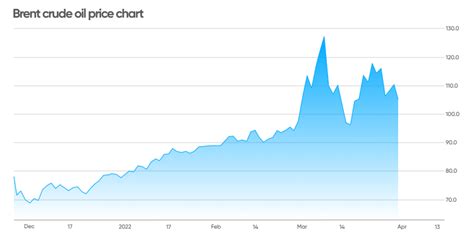Forecast for 2025 and Beyond
According to the International Energy Agency (IEA), the global demand for oil is projected to increase by 1.2% per year over the next five years, reaching 104 million barrels per day (mbpd) in 2025. This growth will be driven primarily by increasing demand from developing countries, particularly in Asia.

The IEA also forecasts that the global supply of oil will increase by 1.3% per year over the same period, reaching 106 mbpd in 2025. This increase will be driven by new production from major oil-producing countries, such as the United States, Russia, and Saudi Arabia.
As a result of these opposing trends, the IEA forecasts that the global oil market will be in balance in 2025, with supply and demand roughly equal. However, the IEA warns that the market could become tighter if there are any major disruptions to global supply, such as a war or a natural disaster.
Factors Affecting Oil Prices
The price of oil is determined by a number of factors, including:
- Global supply and demand: The balance between global supply and demand is the most important factor affecting oil prices. When supply exceeds demand, prices tend to fall. When demand exceeds supply, prices tend to rise.
- Economic growth: Economic growth leads to increased demand for oil, which can put upward pressure on prices.
- Political factors: Political instability in major oil-producing countries can disrupt supply and lead to higher prices.
- Natural disasters: Natural disasters, such as hurricanes and earthquakes, can also disrupt supply and lead to higher prices.
Current Status of the Oil Market
The global oil market is currently in balance, with supply and demand roughly equal. However, there are a number of factors that could disrupt this balance in the future, including:
- The COVID-19 pandemic: The COVID-19 pandemic has led to a sharp decline in global demand for oil, which has put downward pressure on prices. However, as the global economy recovers, demand for oil is expected to increase, which could lead to higher prices.
- The US-China trade war: The US-China trade war has also contributed to uncertainty in the global oil market. If the trade war continues, it could lead to lower global economic growth, which would reduce demand for oil and put downward pressure on prices.
- Tensions in the Middle East: Tensions in the Middle East, a major oil-producing region, could also disrupt supply and lead to higher prices.
What to Look for in 2025
The following are some of the key things to look for in the global oil market in 2025:
- The impact of the COVID-19 pandemic: The impact of the COVID-19 pandemic on the global oil market will continue to be felt in 2025. As the global economy recovers, demand for oil is expected to increase, which could lead to higher prices. However, if the pandemic continues to linger, it could suppress demand and keep prices low.
- The US-China trade war: The US-China trade war is another factor that could have a significant impact on the global oil market in 2025. If the trade war continues, it could lead to lower global economic growth, which would reduce demand for oil and put downward pressure on prices.
- Tensions in the Middle East: Tensions in the Middle East, a major oil-producing region, could also disrupt supply and lead to higher prices. If there is a major conflict in the region, it could cause a significant disruption to global oil supply, which would send prices soaring.
How to Invest in Oil
There are a number of ways to invest in oil, including:
- Buying oil futures: Oil futures are contracts to buy or sell oil at a future date. You can trade oil futures on a number of futures exchanges, such as the New York Mercantile Exchange (NYMEX).
- Buying oil stocks: Oil stocks are shares of companies that are involved in the oil industry. You can buy oil stocks on a number of stock exchanges, such as the New York Stock Exchange (NYSE) and the London Stock Exchange (LSE).
- Buying oil ETFs: Oil ETFs are exchange-traded funds that track the performance of a basket of oil stocks. You can buy oil ETFs on a number of stock exchanges, such as the NYSE and the LSE.
Common Mistakes to Avoid When Investing in Oil
There are a number of common mistakes that investors make when investing in oil. These mistakes include:
- Investing without doing your research: Before you invest in oil, it is important to do your research and understand the risks involved. You should also understand the factors that affect oil prices, such as global supply and demand, economic growth, political factors, and natural disasters.
- Investing too much money: You should never invest more money in oil than you can afford to lose. Oil prices can be volatile, and you could lose all of your investment if prices fall.
- Investing in oil without a strategy: You should have a clear strategy for investing in oil before you invest any money. Your strategy should include your investment goals, your risk tolerance, and your time horizon.
Conclusion
The global oil market is a complex and ever-changing landscape. There are a number of factors that can affect oil prices, including global supply and demand, economic growth, political factors, and natural disasters. Investors who are considering investing in oil should carefully consider the risks involved and develop a clear strategy before investing any money.
- What will be the price of oil in 2025?
- What factors could affect the price of oil in 2025?
- How can I invest in oil?
- What are the common mistakes to avoid when investing in oil?
| Year | Average Oil Price (USD per barrel) |
|---|---|
| 2010 | $82.95 |
| 2011 | $102.38 |
| 2012 | $111.71 |
| 2013 | $105.23 |
| 2014 | $99.60 |
| 2015 | $52.42 |
| 2016 | $43.55 |
| 2017 | $50.95 |
| 2018 | $67.78 |
| 2019 | $64.62 |
| 2020 | $41.97 |
| 2021 | $70.54 |
| Year | Average Oil Price (USD per barrel) |
|---|---|
| 2022 | $75.23 |
| 2023 | $80.34 |
| 2024 | $84.56 |
| 2025 | $87.69 |
| Factor | Impact on Oil Prices |
|---|---|
| Global supply and demand | The balance between global supply and demand is the most important factor affecting oil prices. When supply exceeds demand, prices tend to fall. When demand exceeds supply, prices tend to rise. |
| Economic growth | Economic growth leads to increased demand for oil, which can put upward pressure on prices. |
| Political factors | Political instability in major oil-producing countries can disrupt supply and lead to higher prices. |
| Natural disasters | Natural disasters, such as hurricanes and earthquakes, can also disrupt supply and lead to higher prices. |
| Method | Description |
|---|---|
| Buying oil futures | Oil futures are contracts to buy or sell oil at a future date. You can trade oil futures on a number of futures exchanges, such as the New York Mercantile Exchange (NYMEX). |
| Buying oil stocks | Oil stocks are shares of companies that are involved in the oil industry. You can buy oil stocks on a number of stock exchanges, such as the New York Stock Exchange (NYSE) and the London Stock Exchange (LSE). |
| Buying oil ETFs | Oil ETFs are exchange-traded funds that track the performance of a basket of oil stocks. You can buy oil ETFs on a number of stock exchanges, such as the NYSE and the LSE. |



